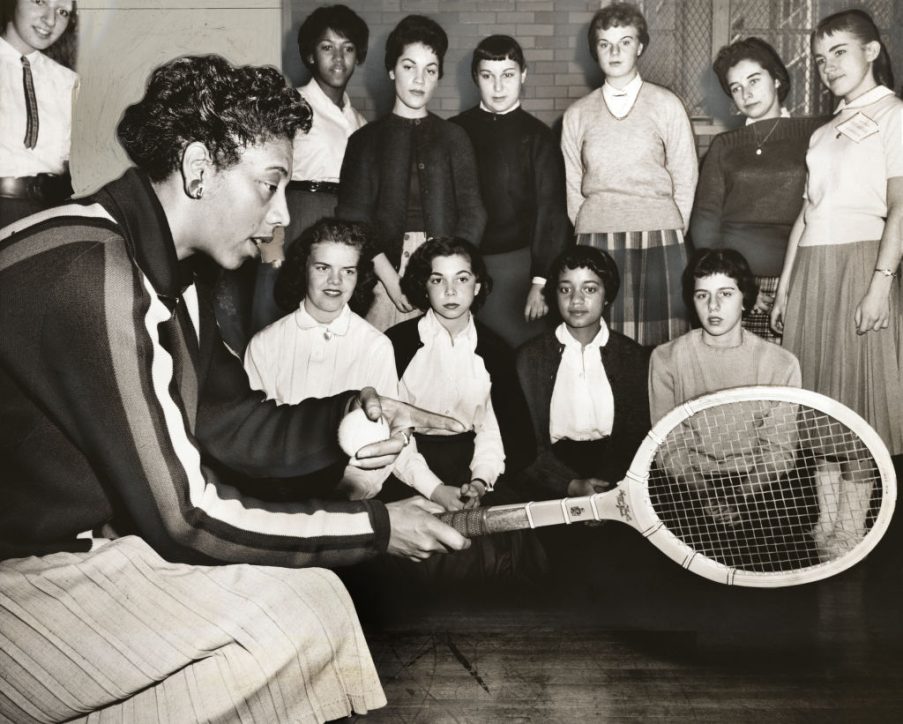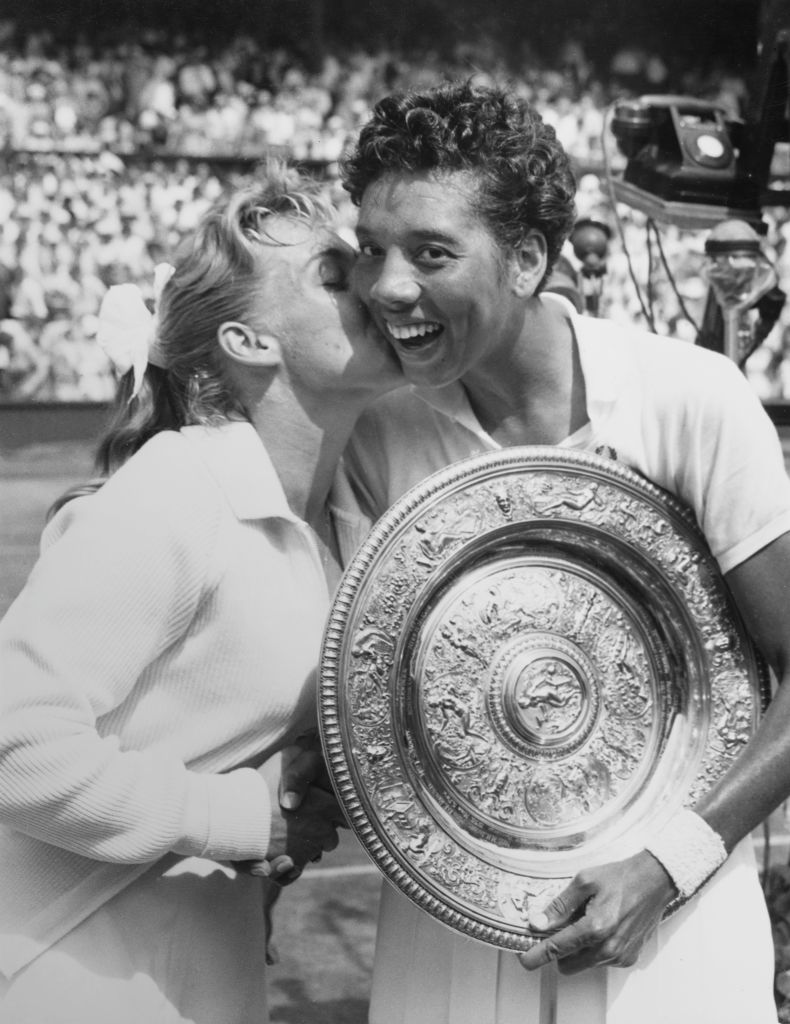Althea Gibson Honored With Renamed Harlem Street
Harlem Street Named After Trailblazing Tennis Legend Althea Gibson

Althea Gibson, U.S. and Wimbledon tennis champion, with female students at Tennis Clinic, Midwood High School in Brooklyn Source: Universal History Archive / Getty
Trailblazing tennis luminary Althea Gibson’s historic strides in sports have empowered generations of Black athletes to boldly bring their excellence into spaces where they are often underrepresented and rise to the top. The late barrier-breaking player was honored in Harlem with a street renaming for her influence and impact on, and beyond the tennis court, NBC News reported.
The New York City neighborhood was the backdrop of Gibson’s coming-of-age journey. Gibson and her family hailed from South Carolina and moved to the community during the Great Migration. It was in Harlem where she discovered her passion for tennis.
After picking up paddle ball as a hobby, she perfected her craft and became a local champion. Musician Buddy Walker, who oversaw the neighborhood’s Police Athletic League recreation department, noted her skills and invited her to compete in local tennis tournaments. The sport served as an escape from the financial hardships within her household and obstacles that Gibson faced at school.
A year after her introduction to tennis, Gibson won a local tournament hosted by the American Tennis Association, a triumph leading to a stream of victories. She won two consecutive ATA titles in 1944 and 1945. Between the years 1947 to 1956, Gibson, a Florida A&M University grad, won ten successive ATA championships.
In 1950, she became the first Black tennis player to compete at the U.S. National Championships and a year later became the first Black person to play at Wimbledon. Her rise to prominence was no easy feat as she endured racism and sexism within the white male-dominated sport. It was understanding that her presence in tennis would open the door for other athletes who looked like her fueled Gibson.

Source: Keystone / Getty
On what would have been her 95th birthday, Gibson’s loved ones, influential individuals who have advanced the sport of tennis and a collective of community leaders gathered on West 143rd Street between Adam Clayton Powell and Malcolm X Boulevards in Harlem to unveil what is now Althea Gibson Way. The street sign stands near the Harlem building where she once lived.
“It is imperative that we keep her name alive,” Katrina Adams, the former president and CEO of the U.S. Tennis Association, said in a statement. “It’s the next generation that needs to know that before Coco, Venus, Serena, Chanda, me, Lori, Zina, and Leslie, was Althea. Why? Because Althea came first.” There are plans in the works to honor Gibson’s legacy in Harlem further. The city of New York is reportedly working on creating a statue with her likeness that will live in the neighborhood.
The honorary street naming comes three years after a Gibson sculpture was unveiled outside Arthur Ashe Stadium in Queens, New York.
SEE ALSO:
Statue Paying Homage To Tennis Legend Althea Gibson Unveiled At U.S. Open
Richmond Renames Street After Tennis Legend Arthur Ashe
Harlem Street Named After Trailblazing Tennis Legend Althea Gibson was originally published on newsone.com















